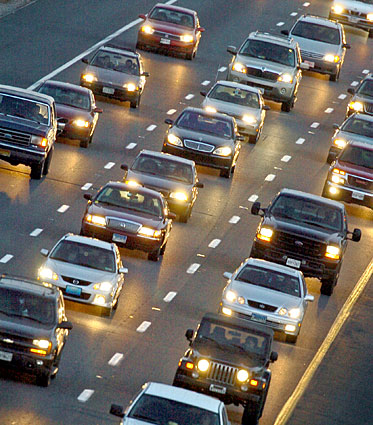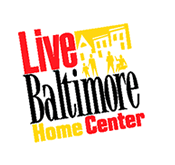Bub buh buh Baltimore...
There is so much I've been meaning to write about so here goes.
1. Paul Johnson points us to the current edition of The Urbanite free monthly, a very interesting architecture, design, and lifestyle magazine distributed throughout Baltimore. There are many interesting articles this month, including:
-- "Navigating Urban Space: Why isn’t walking part of Baltimore’s urban lifestyle?"
-- "The City Beautiful" Can a new and improved urban design and architecture review panel bring better buildings to Baltimore?
-- "Baltimore Observed: The Next Baby Boom" Are more middle-class parents deciding to raise their kids in the city?
-- "Pipe Dreams" What could happen if we treated infrastructure as an integral part of our city’s architecture?
2. ...Speaking of why Baltimoreans don't walk, from that article:
But back in Baltimore also means back in my car, and I did not miss the urban driving experience. I did not miss wasting time in traffic, the persistent gridlocking on President Street, the unsynchronized traffic lights, the close calls, the screaming at strangers, the being screamed at by strangers. I did not miss paying for gas and parking. I did not miss sacrificing my health and the health of the planet for a ride.
I decided to ask a few of my Baltimore City neighbors, Why don’t we walk? I heard concerns about streetlights and safety, but that doesn’t explain why we don’t walk during the day. Mostly I heard hollow attempts to describe an experience—walking in Baltimore—that no one thought was much fun. So I began to walk the streets in search of the reasons for our aversion.
How the hell is it possible that Baltimore ranks higher than Washington, DC in terms of being able to get around in a scenario of $100 per barrel oil and $5 or $6/gallon gasoline? According to this article from the Saturday Sun, "City could keep rolling if $100 oil parked cars," Baltimore is ranked 9th and DC 11th. From the article:
SustainLane, an online information provider about resource conservation, ranked Baltimore ninth, behind New York, Boston and Philadelphia in coping with $100-a-barrel oil.Baltimore even beat Washington, ranked No. 11, which has perhaps the nation's largest circular parking lot in the Capitol Beltway but also carried 190 million riders on its Metro subway system in fiscal 2004.
Considering that Baltimore had only 12.4 million subway riders and 92 million total public transit users, SustainLane's praise may seem suspect to some transit advocates. They also note that Baltimore recently built several parking garages to accommodate commuters by car.And Maryland listed a new highway in suburban Washington as its top transportation priority. Many local residents might not realize there is public transportation.
Given how "discoordinated" defines Baltimore's transit "system," (see this previous blog entry "Baltimore and Transit, a marriage made in hell?") this is but one more example of badly designed measurements and study methodology.
3. My comments on a listserv about this Sun article, "Hotel's flawed design will harm city" by architects writing about why the latest city-subsidized project, an additional "Convention Center Headquarters Hotel" won't contribute what it should, because of its disconnected from its context anti-urban design. From the article:
One of the most enchanting elements of the ballpark is that it participates in the street life of the city. It manages this through its remarkable permeability. A ground level arcade and an upper level promenade reduce its massiveness and invite pedestrians to become involved in both the surrounding urban energy and the spectacle of a ball game.
Eutaw Street continues through the site between the stadium proper and the historic warehouse, knitting the stadium grounds into the fabric of the neighborhood. The stadium complex faces directly onto the adjacent streets on its north, east and west sides, without the large parking lots that create a feeling of isolation at other ballparks.
This sense of connection is a critical aspect of the design that few other cities have managed to emulate and is more important to its success than the historical details that have been imitated across the country.
The interconnected exterior urban "living rooms" are a pleasure to walk through and provide a lively and attractive pedestrian environment. No one up to now has suggested eliminating or bridging over these spaces, as they are an integral part of the experience.
But in the design of the convention center hotel, the city seems to have been identified as the enemy. All open spaces are regarded as problems that must be overcome and, in most cases, bridged over rather than as assets. The extension of Eutaw Street has become a constricted passageway beneath the extensive overhanging connections between the base of the hotel proper and the ballroom wing.
Howard Street has a low-slung bridge across it between the ballrooms and the convention center that will almost entirely block this major view corridor and create a disagreeable pedestrian environment beneath it.
The space in front of Camden Station has an anomalous diagonal wall at the ballroom wing that forms an uncomfortable relationship with the historic station, focuses attention on the largely blank wall at this end of the convention center and has none of the intimate scale and detail of the station itself.
The base of the hotel is a closed box that seems impenetrable despite some areas of glass that have been inserted into the design; there are no arcades or walkways, even along Camden Street. The hotel turns its back on one of the finest urban ballparks in the country with a low, hermetically sealed utility wing.
The uses at the base of the building consist chiefly of service areas and meeting rooms, which add nothing to street activity in the area. There is little retail. The transit station proposed for the site in the block adjacent to Howard Street has been discarded, abandoning an opportunity to create a major new gateway to our city.
There are ways to avoid these urban design shortcomings and still have an efficient convention center hotel.
This by the way is an excellent article about urban design and context that I wish just about everybody concerned with urban land use and planning issues would read and think about in terms of their own situations...
4. Here's what I wrote about Baltimore's very urban renewal development orientation:
Stu must know this much better than I do, but it is so clear that the urban renewal orientation permeates the thinking of the growth machine types (politicos and high-level business and nonprofit muckety mucks) in Baltimore.
I have been reading the draft comp plan revision for Baltimore, and I am impressed e.g. that they include a 40 page history of the city. But the last few pages of this section, about the "modern" era are positively giddy about the benefits of urban renewal.
While I haven't read David Wallace's autobiography (Urban Planning/My Way) yet, thumbing through it indicates that it is probably one of the better sources for explaining how and why the Baltimore Growth Machine believes what it does. They see Charles Center as a great success in addition to the Inner Harbor, and there is a prevalent belief that there were no assets at all in the Inner Harbor area and that they did the right thing in tearing it all down and starting fresh.
As great as Camden Yards is, a "throwback" stadium, it did come at the cost of tearing down an extant great stadium also, Memorial Stadium, etc.
In any case, not trying to run down Nathan, but the prevalent beliefs about what comprises and shapes the "revitalization" or "redevelopment" paradigm are pretty persistent and difficult to change, especially because the ability of alternative viewpoints to access and permeate the muckety mucks is pretty limited.
As you all know from what I write, I claim, correctly I believe, that the same kind of urban renewal attitude is prevalent in DC. Despite the heritage assets of both cities, the cities share traditional clearance approaches, a focus on starchitecture and buildings as objects. It doesn't work too well on the ground. I think they got lucky with Camden Yards, judging by its lack of impact on subsequent projects such as the football stadium.
5. And this did lead to my learning of a "place-setter" website called Envision Baltimore and a companion e-list. It's a nice looking website that has a lot of potential.
6. Ironically, despite Baltimore ranking 9th and DC 11th in terms of the ability to get around without a car, the Sunday Sun ran this article, "Rush-hour traffic is fast slowing to a crawl."
 Traffic crawls on the inner loop of the Baltimore Beltway between Baltimore National Pike and Security Boulevard on Friday. (Sun photo by Karl Merton Ferron) Mar 24, 2006
Traffic crawls on the inner loop of the Baltimore Beltway between Baltimore National Pike and Security Boulevard on Friday. (Sun photo by Karl Merton Ferron) Mar 24, 20067. And tonite from 5-7:30 pm at Capitol Lounge (200 block of Pennsylvania Avenue SE), the Live Baltimore program will be trying to pick off DC-area residents to more to Baltimore. If you decide to move but still work in DC, I suggest urban pioneering in the area around Penn Station, where there is still block after block of virtually abandoned building stock.

Check out the competition in any case. They have some attractive refrigerator magnets that you can probably get for free (normally they cost $1).
Index Keywords: transit; urban-design-placemaking; car-culture



0 Comments:
Post a Comment
<< Home